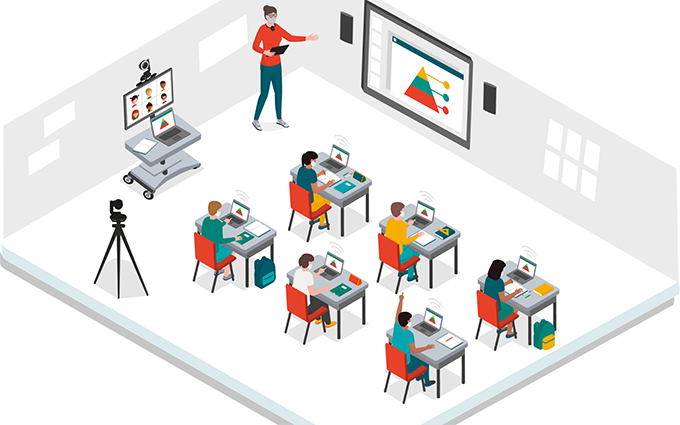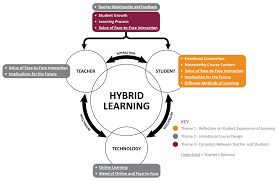
Post-pandemic education has taken an important turn: the incorporation of technologies as part of the teaching and learning process is a reality that came faster than expected. Teachers, students and even parents had to learn and relearn in order to make use of the educational platforms through which the classes were being carried out.
After the confinement, the changes do not seem to have been maintained. What to do when you continue with the same traditional classes, exactly where we left off before March 2020, the traditional class, in which the contents are exposed and you learn in person?
One of the proposals that have also become a promise for education is hybrid learning or mixed modality (known in English as b-learning , short for blended learning ).

A hybrid learning
Combine the use of technologies with face-to-face classes; In general terms, it could be defined as that group of mixed educational proposals in which some distance learning formats are used over the Internet and other electronic formats (simulations, videos, etc.) complemented with the benefits of face-to-face teaching.
A continuum is created between face-to-face and virtual teaching-learning situations with more or less possibilities of interaction and overlap between one modality and another.
This approach, little by little, has become an important part of the new agenda for the future of education. In addition, it is a lower cost innovative alternative compared to virtual classes.
Confusion of terms
However, there is still a lack of preparation on these issues, since the terms have been confused: many of the educational institutions consider that they are making use of this modality by simply using an educational platform, without focusing on the methodologies used.
In these cases, a true virtual education has not been carried out, but rather the traditional teaching method has only been transferred to a screen, without a structure that allows students to guarantee meaningful learning.
The importance of planning
This is where the importance of proper planning of teaching strategies mediated by technology lies. These strategies should help the student to go through the five dimensions that make up significant learning: motivation, understanding, functionality, active participation and the relationship with real life. All this can be achieved through the hybrid mode.
In other words, the teacher’s task is twofold: on the one hand, he must ensure that students learn the contents stipulated in the study programs and, simultaneously, stimulate higher thought processes.
Training and knowledge
There are specialized trainings in mixed modalities that allow teachers to better understand the use of technologies for pedagogical purposes and complement these strategies with classes in front of a group in the classroom.
This should be taken as an important educational goal, not only for teachers, but also for educational institutions. Institutions must be committed not only to the incorporation of technologies in their classrooms, but also to the training of their teachers in the use of these for pedagogical purposes. Efforts should be focused on making students effective, autonomous learners and, above all, practicing self-management in the best way.
New work culture
Therefore, the goal is to attract teachers towards proposals aimed at creating a new culture of work organization, beyond the use of classrooms and time in a conventional way. That is to say, that they manage to integrate and rethink the strategies from technological mediation, making use of mixed learning.
If the above is carried out, technologies can become the main allies in education, especially when it comes to combining them so that the student learns both in the classroom and outside of it, always with the guidance of a trained teacher. in this type of learning environment.
Teaching in mixed modalities is not static. Its nature and role are inextricably linked to the expectations we have for our students, to our understanding of the human learning process, and to our beliefs about how adults, and especially teachers, can guide young people in their learning.
Author Bio: Maria del Rocio Carranza Alcantar is Professor and Researcher in Education at the University of Guadalajara